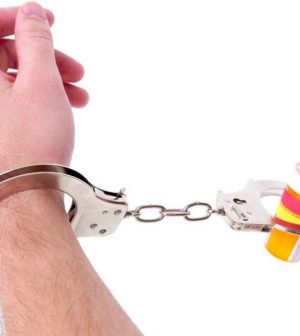- Navigating Your Midlife Crisis: Embracing New Possibilities
- City Raccoons Showing Signs of Domestication
- Mapping the Exposome: Science Broadens Focus to Environmental Disease Triggers
- One Week Less on Social Media Linked to Better Mental Health
- Your Brain Changes in Stages as You Age, Study Finds
- Some Suicide Victims Show No Typical Warning Signs, Study Finds
- ByHeart Formula Faces Lawsuits After Babies Sickened With Botulism
- Switch to Vegan Diet Could Cut Your Greenhouse Gas Emissions in Half
- Regular Bedtime Does Wonders for Blood Pressure
- Dining Alone Could Mean Worse Nutrition for Seniors
High-Dose Withdrawal Drug in ER Can Help Battle Opioid Addiction

Giving high doses of buprenorphine in the emergency department is a safe and effective way of treating withdrawal symptoms in patients battling opioid addiction, according to a new study.
“Emergency departments are at the front lines of treating people with opioid use disorder and helping them overcome barriers to recovery such as withdrawal,” said Dr. Nora Volkow, director of the U.S. National Institute on Drug Abuse (NIDA), which funded the study.
Lower doses of the approved opioid addiction treatment drug are the current standard of care, but some U.S. emergency departments use higher doses. Researchers said elevated doses of the medication may provide an extended period of withdrawal relief to people after being discharged from the hospital.
To assess such use, researchers analyzed 579 emergency department visits made by nearly 400 opioid-addicted adults to the Alameda Health System Highland Hospital in Oakland, Calif.
In 63% of those cases, patients received more than the usual upper limit of 12 mg of buprenorphine under the tongue. Patients were given 28 mg or more in 23% of cases.
Higher doses were safe and well tolerated, and there were no reports of side effects such as respiratory problems or drowsiness.
A small number of serious adverse events were determined to be unrelated to high-dose buprenorphine therapy, according to findings published July 15 in the journal JAMA Network Open.
“Providing buprenorphine in emergency departments presents an opportunity to expand access to treatment, especially for underserved populations, by supplementing urgent care with a bridge to outpatient services that may ultimately improve long-term outcomes,” Volkow said in a NIDA news release.
Dr. Gail D’Onofrio, head of emergency medicine at Yale School of Medicine, led the research.
“This study enhances the evidence we know about emergency department buprenorphine induction, and could be a game-changer, particularly for vulnerable populations who would likely benefit from a rapid induction at the time of the visit,” D’Onofrio said in the release.
More information
The U.S. Substance Abuse and Mental Health Services Administration has more on buprenorphine.
SOURCE: U.S. National Institute on Drug Abuse, news release, July 15, 2021
Source: HealthDay
Copyright © 2025 HealthDay. All rights reserved.










